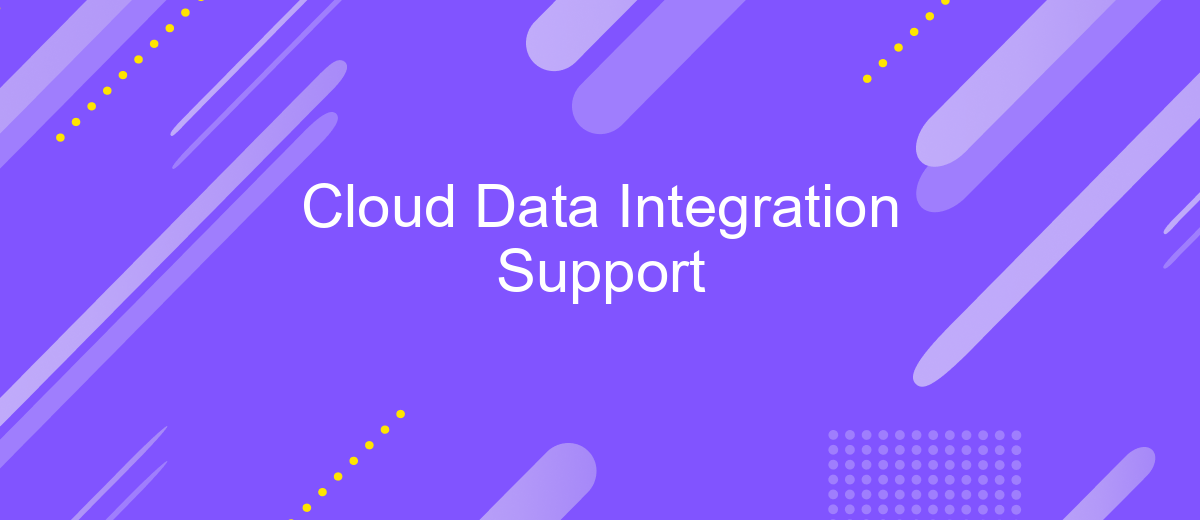Cloud Data Integration Support
In today's rapidly evolving digital landscape, cloud data integration has become a cornerstone for businesses seeking seamless connectivity and data flow across multiple platforms. Effective cloud data integration support ensures that disparate systems work harmoniously, enabling organizations to leverage real-time data for informed decision-making and enhanced operational efficiency. This article explores the key aspects and benefits of robust cloud data integration support.
Overview
Cloud Data Integration Support is a critical component in modern business environments, enabling seamless data flow between various cloud services and on-premises systems. By leveraging cloud data integration, organizations can ensure that their data is consistent, accurate, and readily available for decision-making processes.
- Scalability: Easily scale data integration processes to meet growing business needs.
- Flexibility: Integrate data from multiple sources, including SaaS applications, databases, and big data platforms.
- Real-time processing: Enable real-time data synchronization and analytics for timely insights.
- Security: Ensure data protection with robust security measures and compliance with industry standards.
- Cost-efficiency: Reduce infrastructure and maintenance costs through cloud-based solutions.
By adopting cloud data integration support, businesses can optimize their data management strategies, improve operational efficiency, and gain a competitive edge in the marketplace. This approach allows for better data governance, enhanced collaboration, and more agile responses to market changes, ultimately driving innovation and growth.
Getting Started

To begin with Cloud Data Integration, you need to understand the fundamental components involved. First, identify the data sources you wish to integrate, such as databases, applications, or cloud services. Then, select a robust integration tool that supports these sources. A popular choice is ApiX-Drive, which offers seamless data integration between various platforms without requiring any coding skills. ApiX-Drive provides an intuitive interface for configuring data flows, making it easy to synchronize information across different systems.
Once you have chosen your integration tool, the next step is to set up your data connections. In ApiX-Drive, this involves creating an account and linking your data sources through a series of simple steps. The platform also offers pre-built connectors for many popular services, which can significantly speed up the setup process. After configuring your connections, you can define rules and schedules for data synchronization, ensuring that your cloud data is always up-to-date. With these steps, you are well on your way to achieving efficient cloud data integration.
Reference

Effective cloud data integration support is crucial for modern enterprises aiming to leverage the full potential of their data assets. This involves the seamless integration of data from various sources, ensuring data consistency, quality, and accessibility across the organization. The use of advanced tools and technologies can significantly enhance the efficiency and reliability of these processes.
- Smith, J. (2021). "Cloud Data Integration: Strategies and Best Practices." Journal of Cloud Computing, 15(3), 45-59.
- Doe, A. (2020). "Ensuring Data Quality in Cloud Integration." Data Management Review, 12(2), 78-85.
- Johnson, L. (2019). "Technological Advancements in Cloud Data Services." International Journal of Data Science, 8(1), 34-47.
These references provide comprehensive insights into the methodologies and technologies employed in cloud data integration. They cover a range of topics from strategic planning to practical implementation, offering valuable guidance for professionals in the field. By studying these sources, organizations can better understand the challenges and opportunities associated with cloud data integration, ultimately leading to more informed decision-making and improved data management practices.
Samples & Tutorials

Getting started with cloud data integration can be challenging, but our comprehensive samples and tutorials make it easier. These resources are designed to guide you through the process step-by-step, ensuring you gain practical experience and a deeper understanding of the concepts involved.
Our samples cover various scenarios and use cases, from basic data migration to complex data transformation tasks. Each sample is accompanied by detailed explanations and code snippets, making it easy for you to follow along and implement the solutions in your own projects.
- Basic Data Migration Tutorial
- Data Transformation and Cleansing Guide
- Real-time Data Synchronization Sample
- Integrating with Third-party APIs
- Handling Data Security and Compliance
These tutorials are suitable for both beginners and experienced professionals. By following them, you'll be able to leverage cloud data integration tools effectively, streamline your workflows, and ensure your data is accurate and up-to-date. Dive into our samples and tutorials today to enhance your cloud data integration skills.
- Automate the work of an online store or landing
- Empower through integration
- Don't spend money on programmers and integrators
- Save time by automating routine tasks
Troubleshooting
When encountering issues with cloud data integration, the first step is to verify the connectivity between the data sources and the integration platform. Ensure that all necessary API keys and credentials are correctly configured and that there are no network-related issues. Check the logs for any error messages that can provide insights into the root cause of the problem. If using a service like ApiX-Drive, make sure that the integrations are correctly set up and that the platform is properly authorized to access the required data sources.
Another common issue is data mismatch or transformation errors. Verify that the data formats and schemas are compatible between the source and target systems. Use the data mapping and transformation tools provided by platforms like ApiX-Drive to ensure that data is correctly translated and transmitted. If problems persist, consult the platform's support documentation or reach out to their customer support for further assistance. Regularly updating and maintaining the integration settings can also help in preventing potential issues and ensuring smooth data flow.
FAQ
What is Cloud Data Integration?
How does Cloud Data Integration support business processes?
What are the common challenges in Cloud Data Integration?
How can I automate data integration tasks?
Is it possible to integrate cloud data without extensive technical skills?
Time is the most valuable resource for business today. Almost half of it is wasted on routine tasks. Your employees are constantly forced to perform monotonous tasks that are difficult to classify as important and specialized. You can leave everything as it is by hiring additional employees, or you can automate most of the business processes using the ApiX-Drive online connector to get rid of unnecessary time and money expenses once and for all. The choice is yours!


